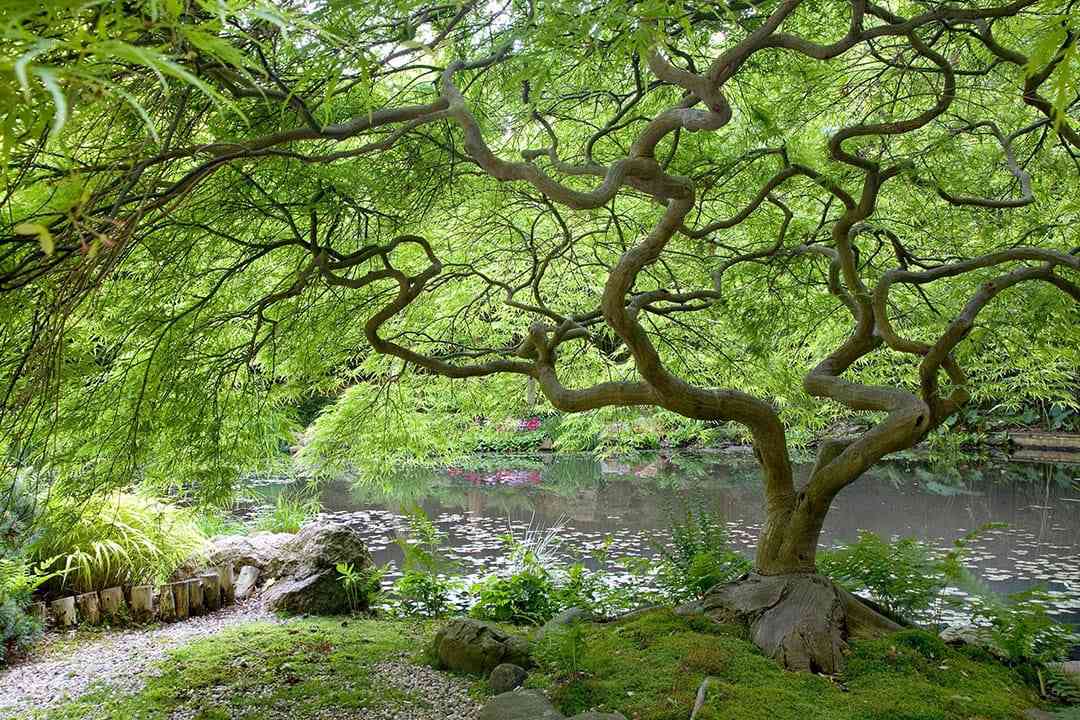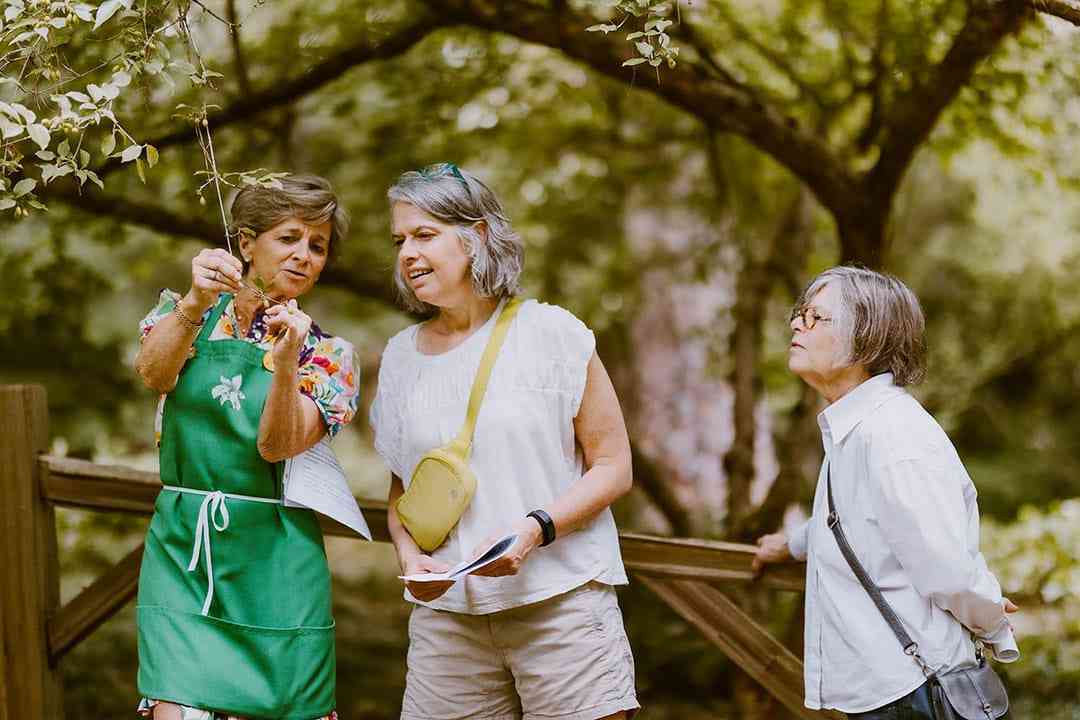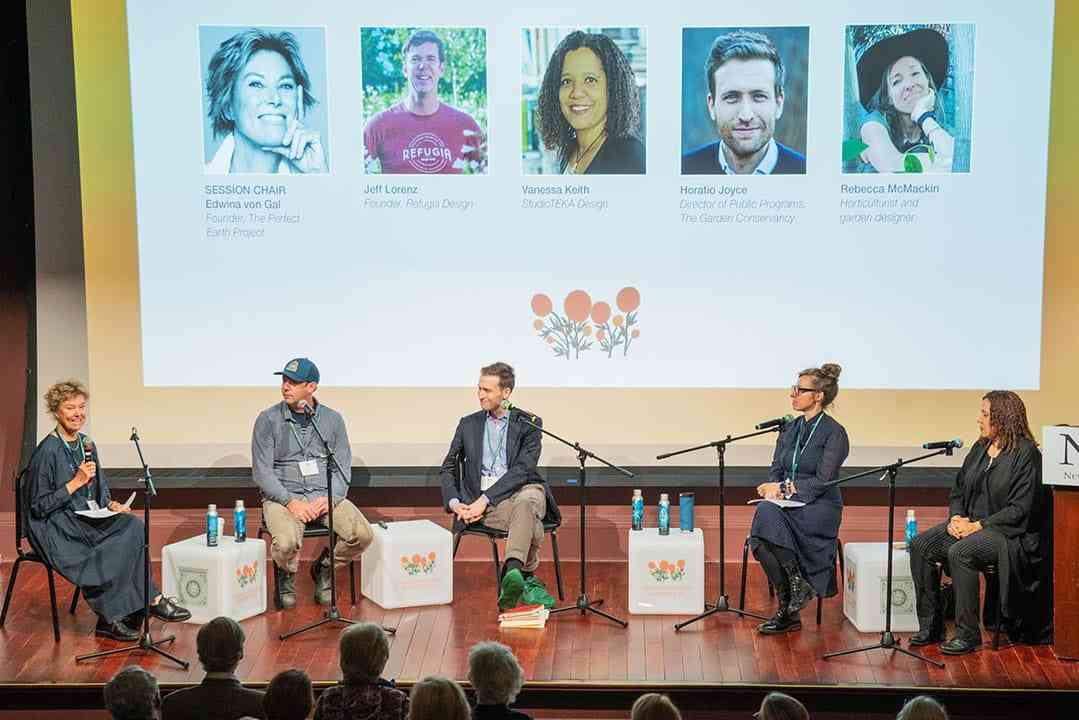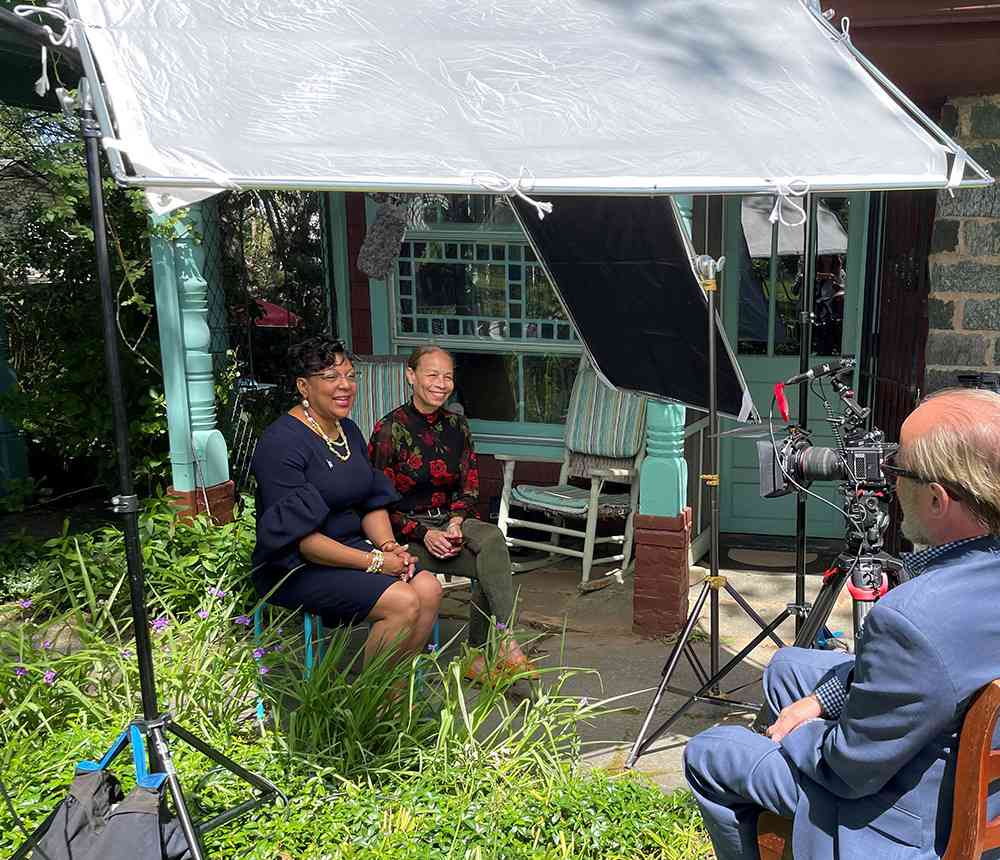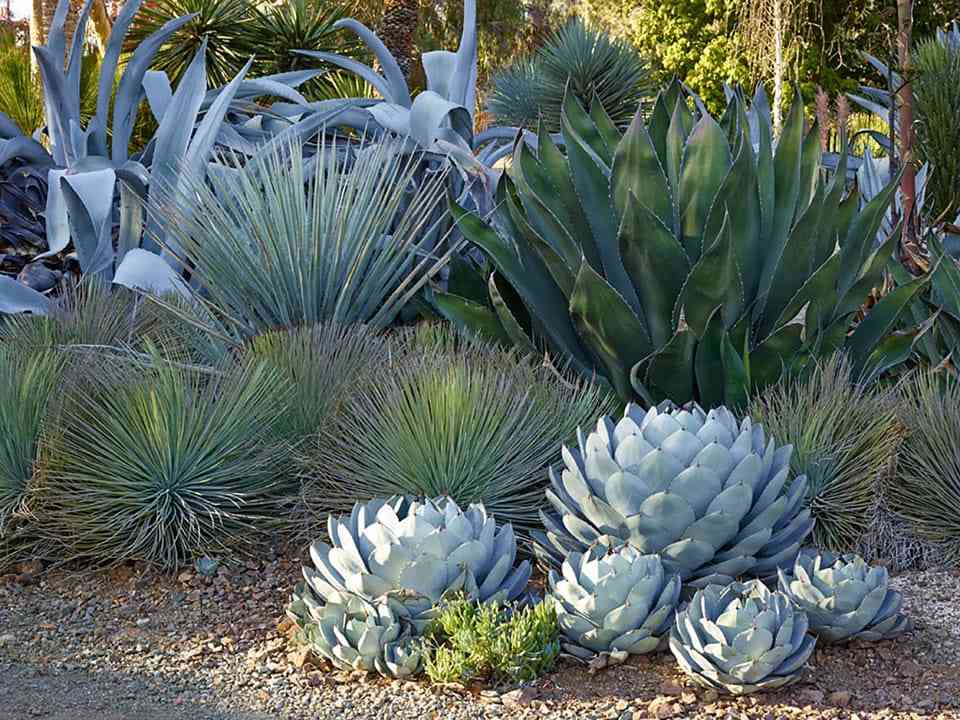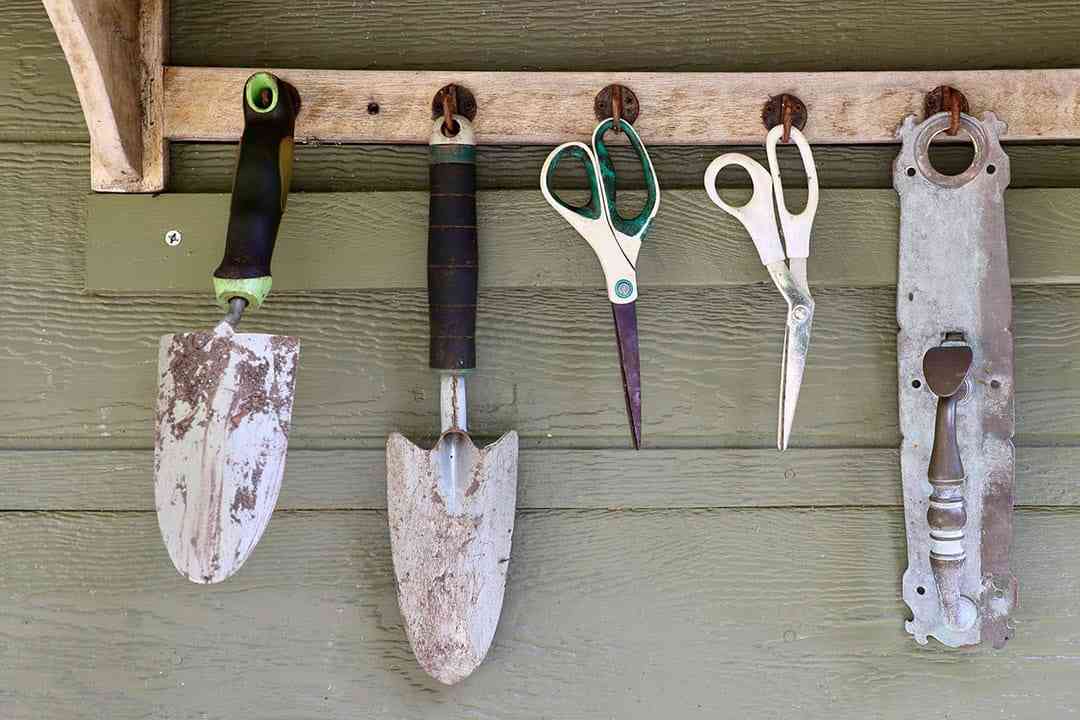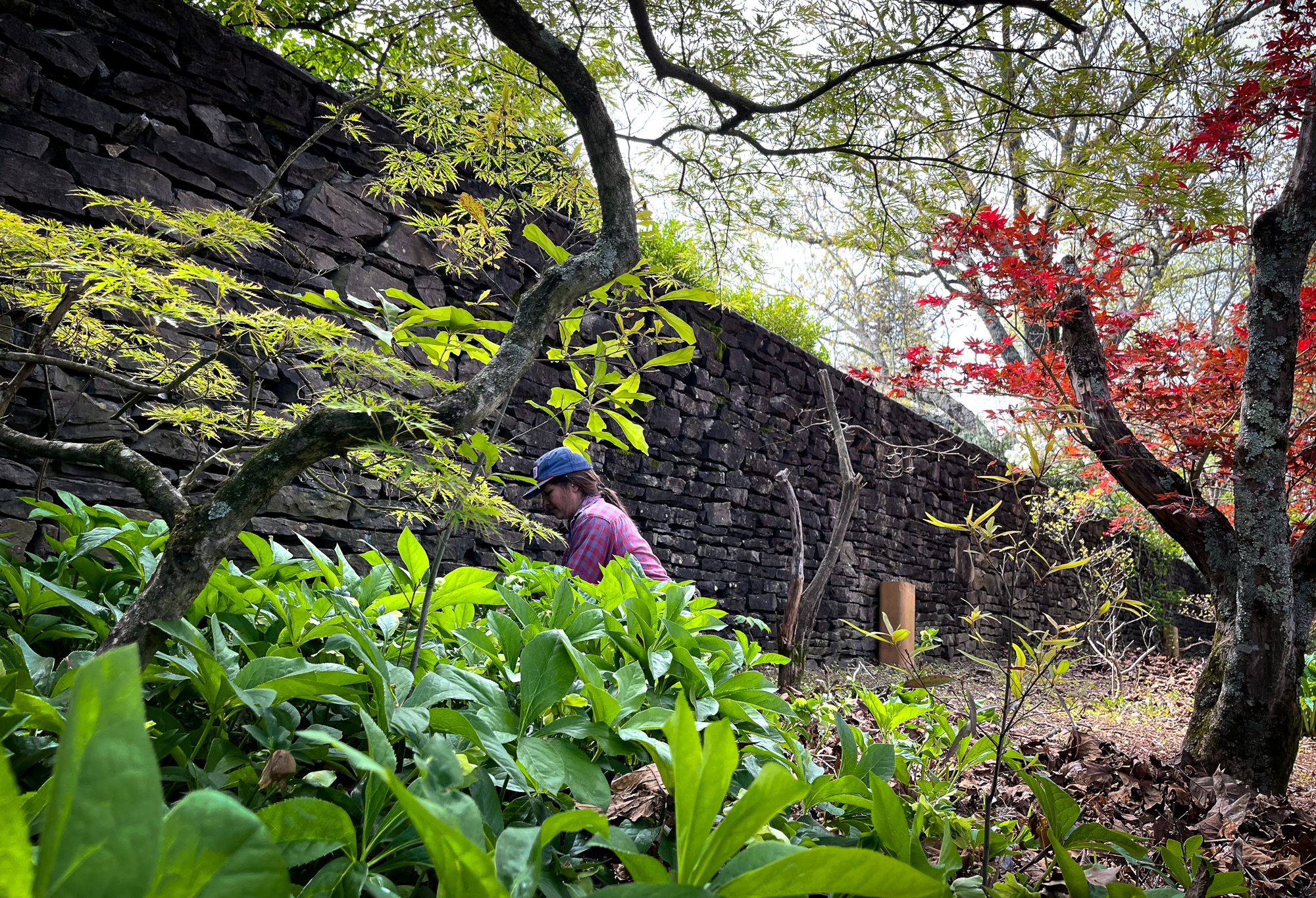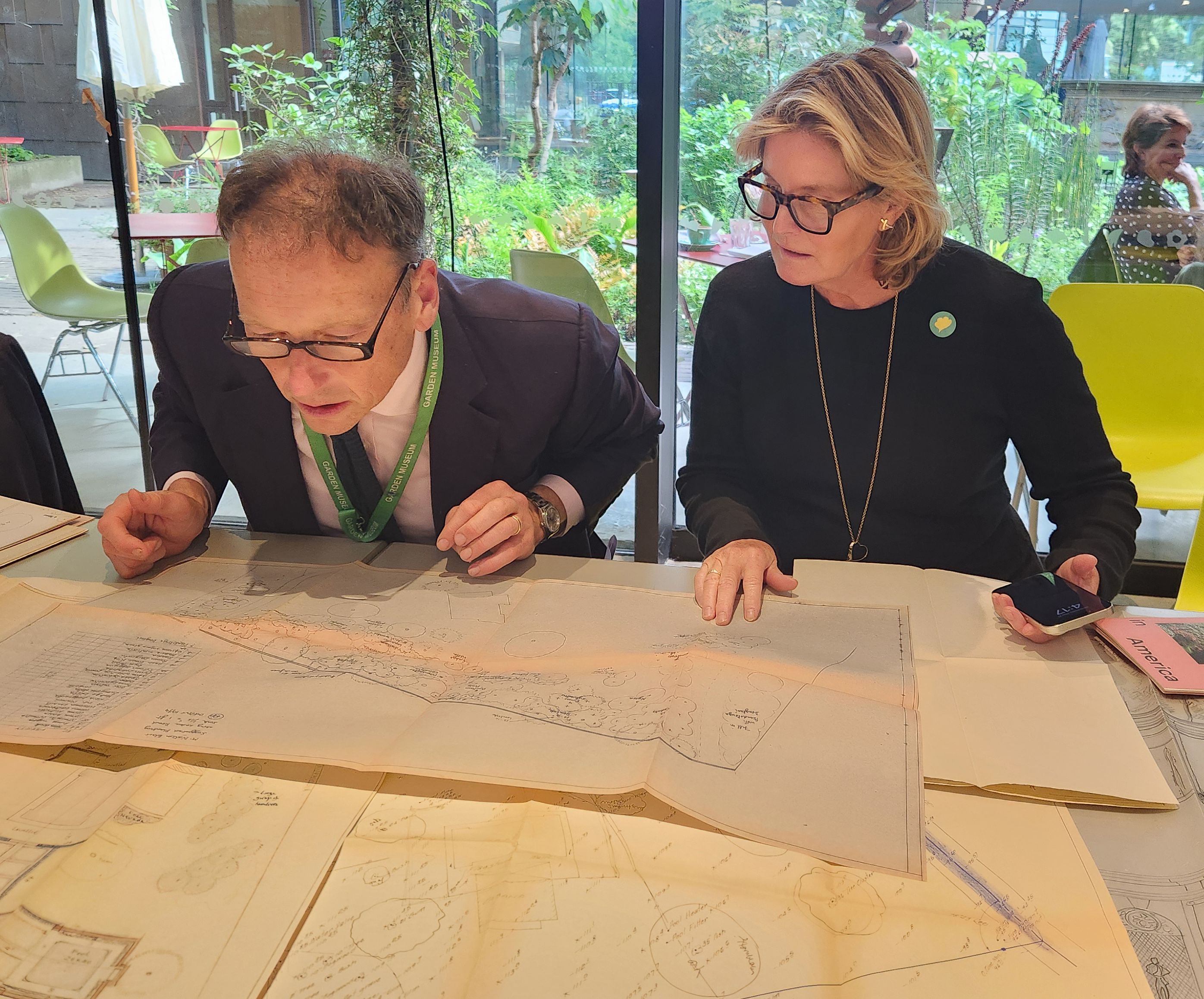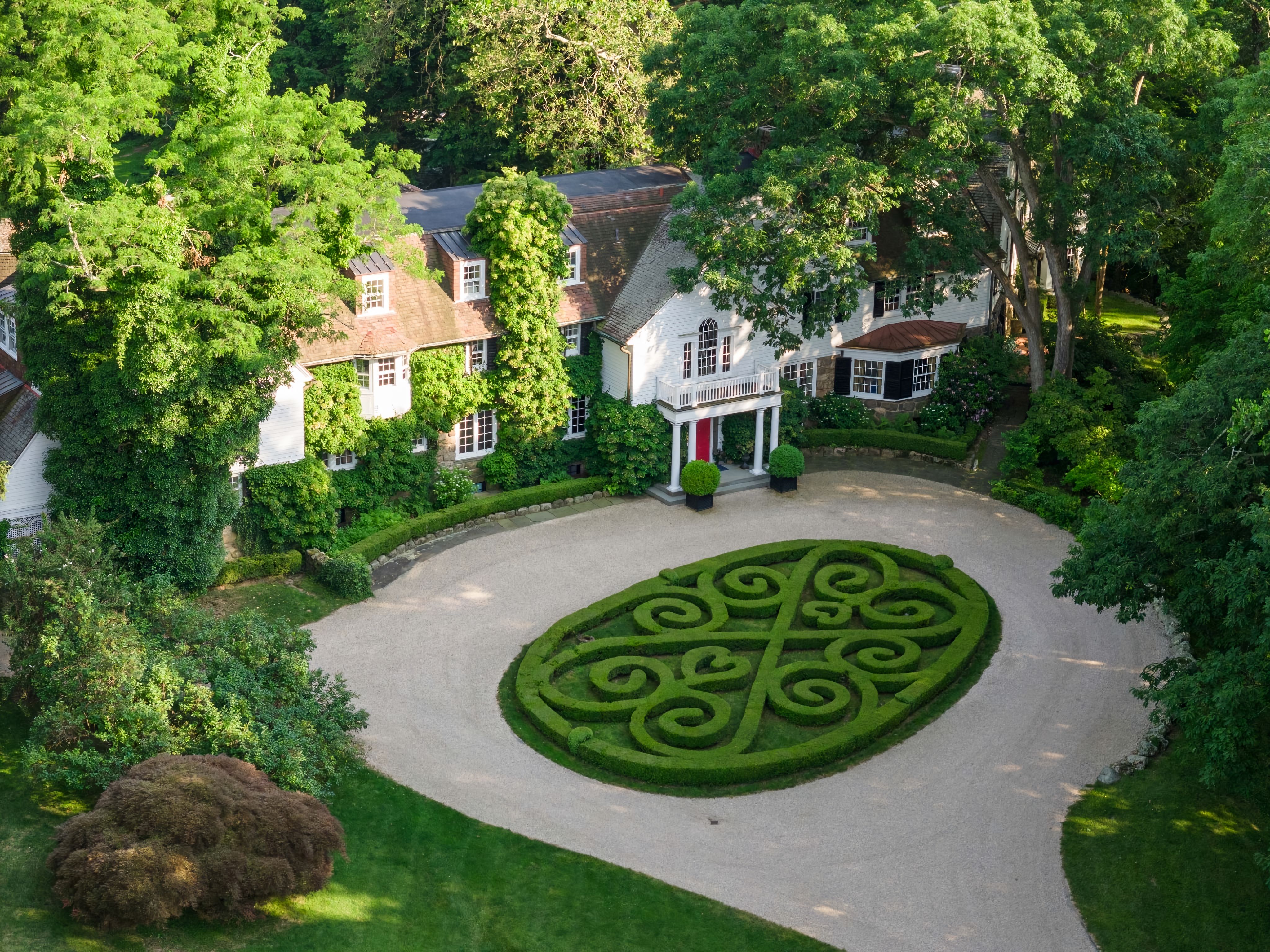The Gardens at Palmdale is a five-acre meditation garden, located in Fremont, CA, in the southeast San Francisco Bay Area. The garden includes 200 horticultural species, with specimens from around the world, and historic trees, including a Monterrey cypress that is over 300 years old. Paths wind through serene plantings, and cool fountains, ponds, and grottoes. The deep history of the Gardens at Palmdale has been said to reflect "the whole history of California in one spot."
The Gardens at Palmdale is one of the last remaining fragments of the famous Mission San Jose land grant. The Ohlone were the first to enjoy its indigenous trees and plants, followed by Franciscan missionaries who began cultivating olives, fruit trees, and vines. Later, the palms that gave the garden its name were introduced. The gardens belonged to some of the founding families of the California fruit industry, including the Gallegos family, who had one of the state's largest winery operations, and C. L. Best, who formed the California-based Caterpillar Tractor Company.
Owned by the Congregation of the Sisters of the Holy Family since 1948, the gardens were conveyed to the nonprofit Gardens at Palmdale, Inc. in 2019. The gardens will be maintained as a vibrant public open space for the enjoyment of the general public; a place for people to connect with other people and with nature, and to savor the site's rich history.
Learn more about the Gardens at Palmdale
Timeline
2019
The Congregation of the Sisters of the Holy Family conveyed the gardens to the nonprofit Gardens at Palmdale, Inc., who worked with the Garden Conservancy to develop a conservation easement for the property that will protect it in perpetuity. A dedication ceremony was held on May 10, 2019.
1948–2019
The Sisters of the Holy Family maintained the gardens and two historic homes. They fenced in the creek and created a channel for flood control, as well as added a flag pole and a peace pole.
1927–1948
The property was maintained by the Best and Starr families, who cemented in the ponds, planted many exotic horticultural specimens, and added two grotto areas. Many of the lawns and shrubs were removed and used in the 1939 Golden Gate International Exposition in San Francisco.
1905–1927
The Lachman, Metzgar, and Davis families owned the property and added a wishing well structure.
1881–1905
The Gallegos family owned and managed the property. They installed a two-mile, olive tree-lined road leading to the historic winery, which also served as a race track, as well as moved the creek to its current location and planted Yew trees.
1850s–1881
The property was the Estate of E. L. Beard, its first private owner. Beard set out the general pattern of the gardens, which was respected by subsequent owners. As one of the first California fruit exporters, pears were sent to Hawaii, the White House, and the East Coast. Beard also planted many of the California pines and redwoods.
1821–1850s
Mexico became independent and secularized Mission San Jose. The property became part of Mexican Alta California.
1797–1821
The property was a working garden of Mission San Jose, under Spanish rule, and provided food and fiber. Mission San Jose gardens, aqueducts, orchards, and vineyards extended for miles around the main Mission structures, including onto Palmdale grounds. In 1800, canary date palms were planted.
Pre-1797
Prior to the mission era, the region was inhabited by the Ohlone Indians. Some of the trees from that period remain in the gardens today, including California live oaks, western sycamore, and boxelder maple. Mission Creek ran through the property, bringing water year-round in a region with dry summers.
